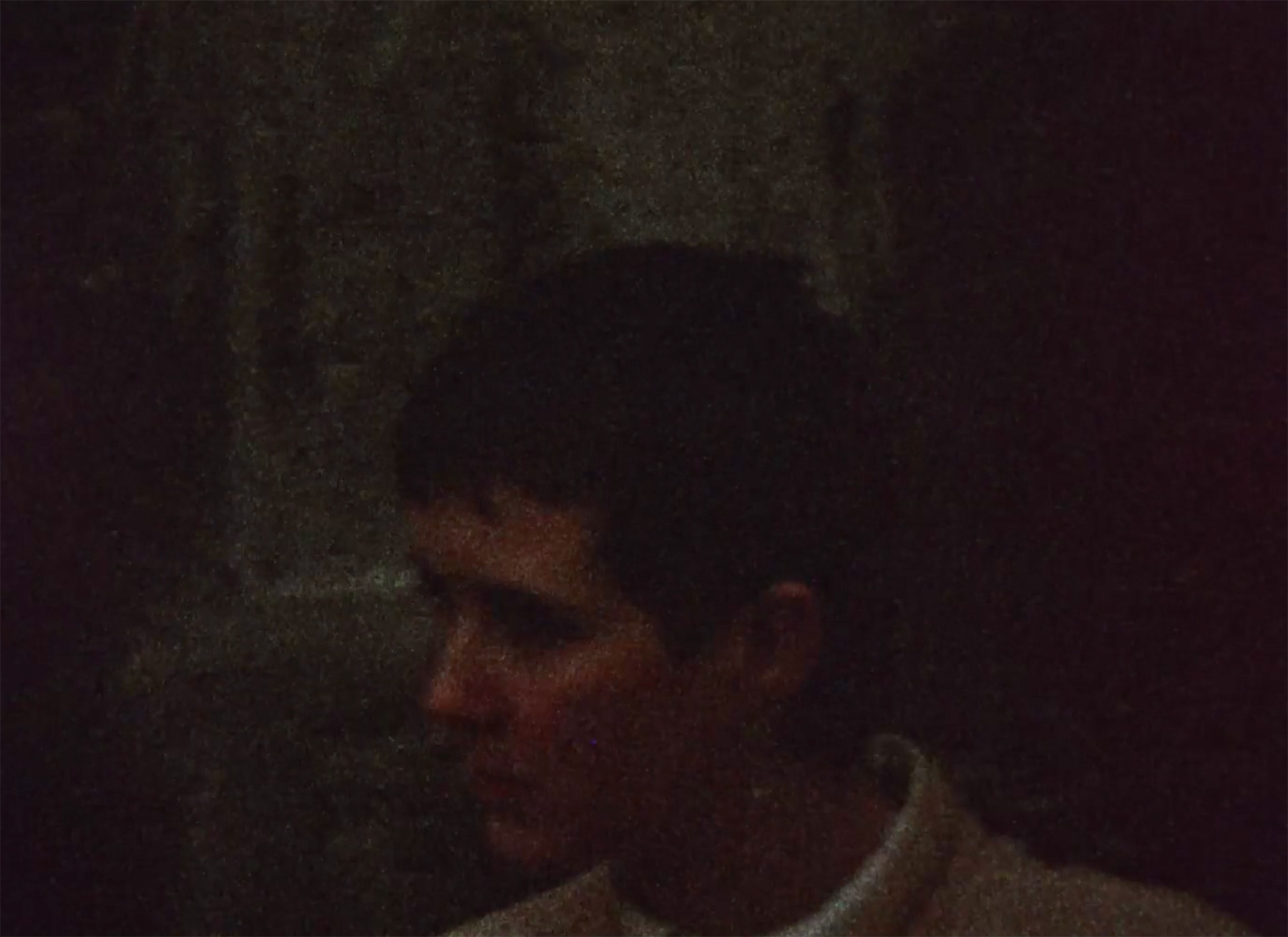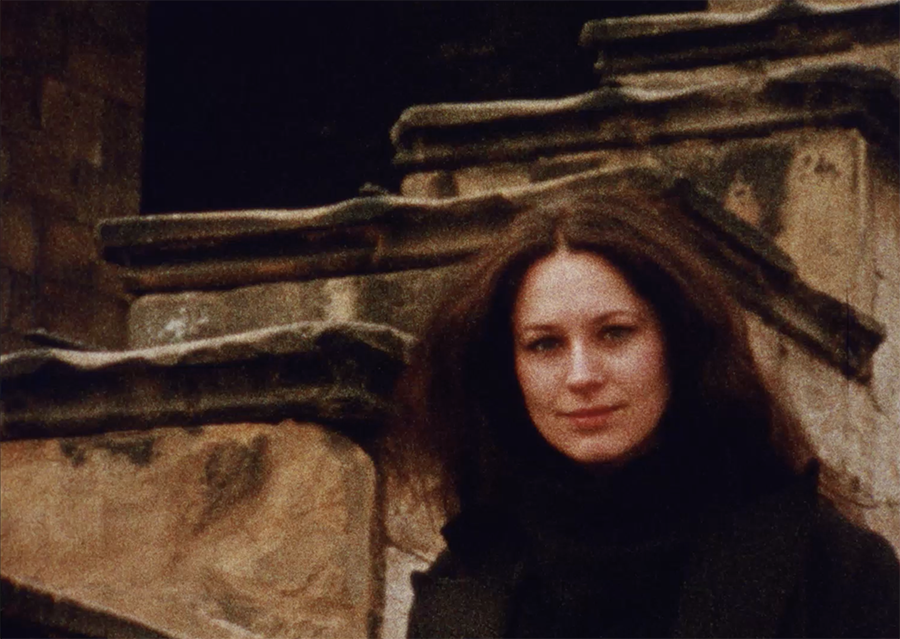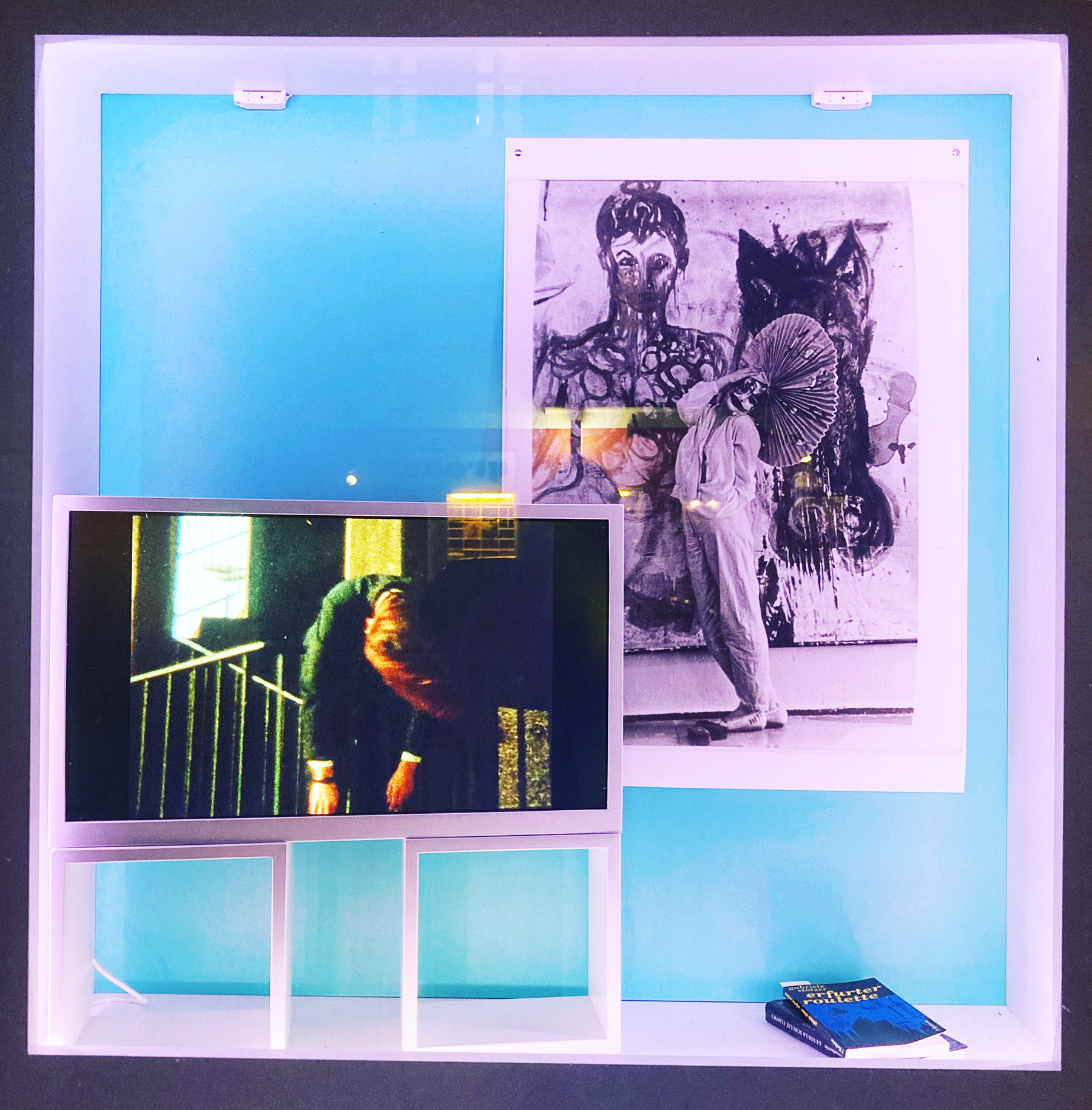- 02 AUGUST — 02 SEPTEMBER 2021
Friendship
Our next exhibition is dedicated to Gabriele Stötzer, probably the most important artist of the GDR. A larger public only became aware of her importance after the end of this state, especially through her numerous book publications. Till 1989, the Ministry for State Security had done its utmost to reduce her visibility to a minimum. Only in recent years has her visual work from the 1980s been rediscovered, and one is amazed to see how it has not only lost none of its radiance and inspiration, but also how Stötzer raised questions in her work and found results that subsequent artists were yet to achieve.
Gabriele Stötzer (also Gabriele Kachold) lived and worked in Erfurt. After training as a medical-technical assistant, she began studying German and art education in the mid-1970s. At this time, she made her first contacts with the (independent) literature and art scene in Jena.
In the summer of 1976, she came under the scrutiny of the state authorities; she had campaigned in a petition against the dismissal of a student, whereupon she herself was expelled from the university and forced to work in a factory as a form of “probation”. Because of her participation in a petition against Wolf Biermann’s expatriation, later that year, the state security took her into custody. She was sentenced to one year in prison in Hoheneck penitentiary for defamation of the state.
With her release, she was offered the chance to leave the country for the FRG. She refused, which again resulted in a suspended sentence in a factory; from then on she was under constant surveillance by the GDR security authorities.
In 1980, she took over the gallery Im Flur, which was to become an important focal point for the free, non-organised art scene, and was closed by the Stasi in 1981 for precisely this reason.
Now she no longer wanted to allow anything to stop her from her artistic work. In prison, Gabriele Stötzer had already begun writing – until 1989, underground publications offered her the only opportunity to publish, but above that she developed her very own voice with experimental, feminist texts based on personal biographical events. In addition, working with film, performance and fashion became her focus; Stötzer was a co-founder of the (women’s) punk band Erweiterte Orgasmus Gruppe and especially of the women artists’ group Erfurt.
Questioning one’s own body became a central theme of her work. The citizens of the GDR cultivated a relatively informal relationship to nudity, omnipresent in naturist culture (precisely not in the sense of capitalist sex sells); Gabriele Stötzer and her colleagues, however, carried this right into the cities: corporeality, making visible, undressing and clothing were at the centre of their performances, photographic and film works.
Stötzer’s photographs are usually grouped together in small series, sorted into groups of works that communicate with each other in terms of form and content. Images of female protagonists, her group of artists, sometimes friends of hers, singular or united, at performances or artistic fashion shows, posing, small stagings and actions. Stötzer’s gaze oscillates between a rather spontaneous, momentary documentary and a precise one, when it is a matter of shooting a performance just for the camera.
At Galerie Auslage we will show Gabriele Stötzer’s photographic documentation of a performance by Cornelia Schleime (1983). Also: Lokalbestimmung (1984), one of her early works on Super-8, produced between 1982 and 1984.
Gabriele Stötzer produced more than a dozen Super-8 films in the 1980s, some of them together with the artists’ group Erfurt.
Lokalbestimmung leads from Erfurt via Jena to Berlin. The film images do not explain themselves: black and white and coloured film material alternate; the shots do not particularly distinguish the three cities, only the tower in Jena can be clearly assigned; the selection and sequence of shots seems erratic.
There is a kind of strolling movement, architecture as background and stage for snow, road traffic, work and private life, a woman pushes the curtain aside in threatening curiosity. Mostly, however, there are images of girlfriends walking across the street, pausing in front of buildings, in casual staging; as a finale, a staircase up and down, a throwing and rattling over the balustrade, between playful gesture and exhaustion.
A poetic text, spoken as voiceover by Gabriele Stötzer, encompasses the scenes and opens them up into another, larger one. Her words are self-reflexive, laconic in tone, with a certain sadness, her speech gesture is soberly contemplative, she knows her text, but it is now about this moment in which she reads it, she sometimes slips up a little, with a slight accent. The voice reminds her to carry on, to carry on herself, in spite of all the pain, to carry on, not to run away, even if there seems to be a space behind the forbidden door, but she forbids herself to go through it.
The soundtrack not only reproduces her voice, but the speech process itself and the surrounding space. Where she does not appear as a person in the film image, she becomes visible through the sound. We can measure the size of her room, we hear her reading, her leafing, her turning, how she tears out pages, tears them smaller, knocks them flat, tears them into smaller and smaller pieces as if she didn’t want to leave any traces. There is no reason to leave traces on paper when they are all in the film now.
Gabriele Stötzer’s Stasi file has been preserved in large parts, and it provides disturbing insights into the work of the GDR’s domestic secret service, most eerily the reports of the narcissistic pathological liar IM Sascha Anderson, masked as an artist.
When Stötzer was “suggested” by the state security to leave for the FRG, she did not take him up on it. The diversity in the form of her artistic expression and her work on the most diverse levels may indicate that she would not have shied away from a new beginning “in the West”; her wild feminist political works rather indicate that the “experiment GDR” was never finished for her.
We look forward to seeing more of Gabriele Stötzer soon and would also like to announce her upcoming exhibitions at the nGbK: firstly as a participant in the group exhibition … oder kann das weg? Case studies on the post-reunification period – from 16 September to 7 November 2021 and, in particular, in Hosen haben Röcke an. Künstlerinnengruppe Erfurt (1984-1994) from 27 November 2021 to 23 January 2022.
Text: Andreas Reihse



